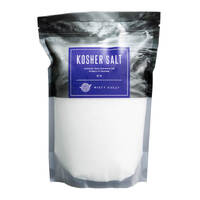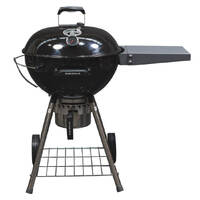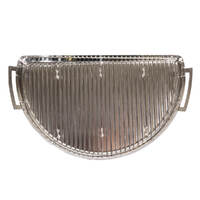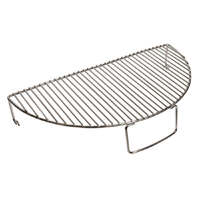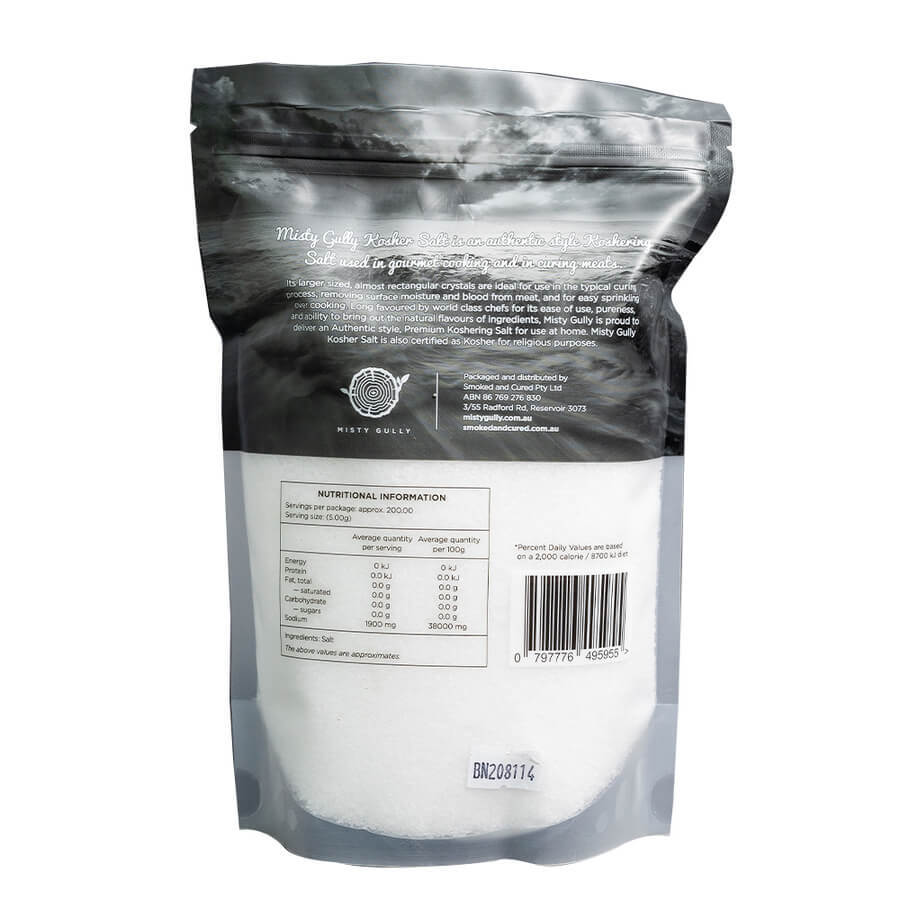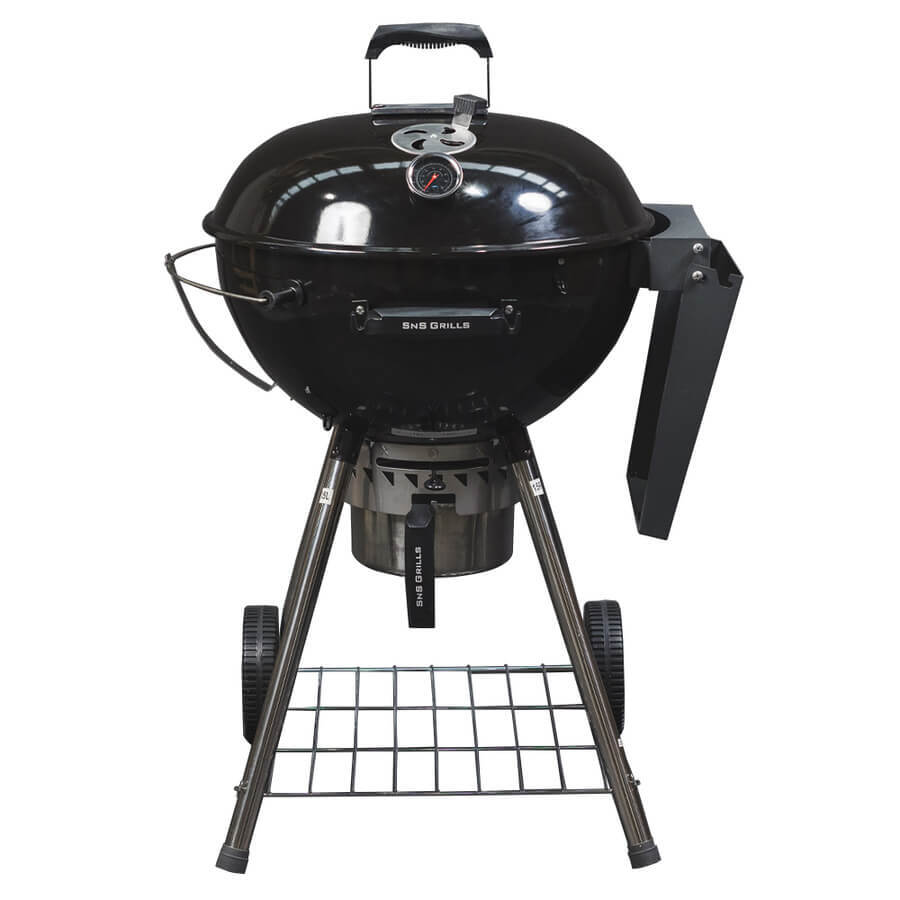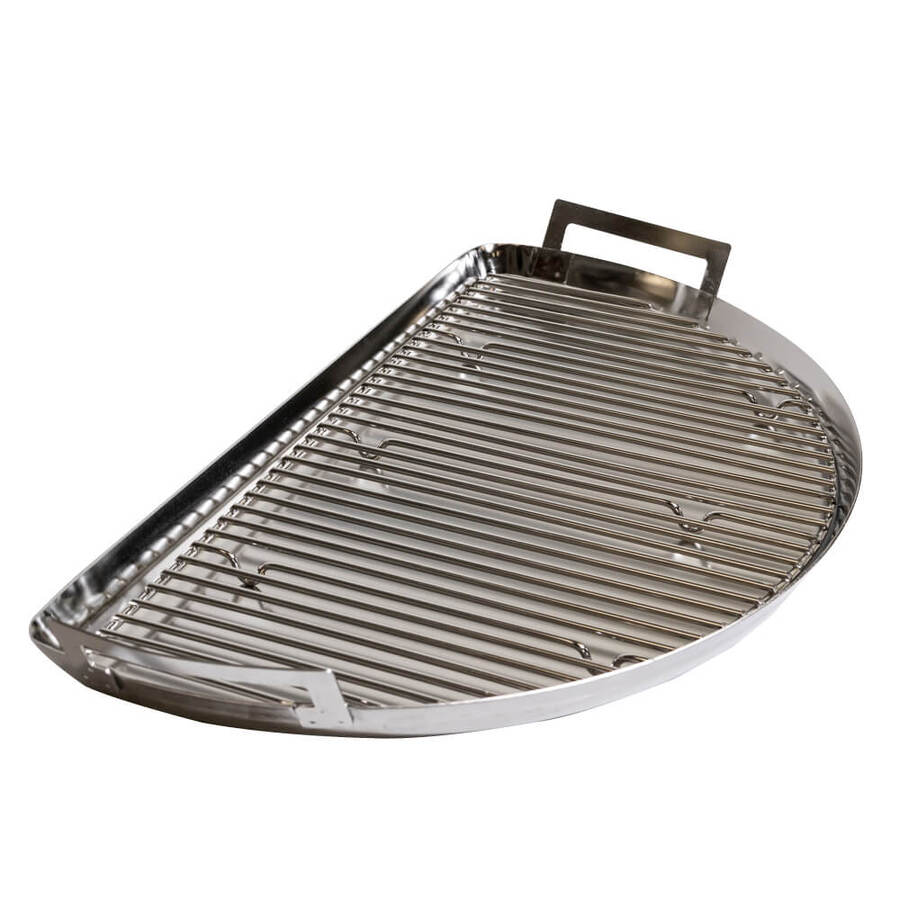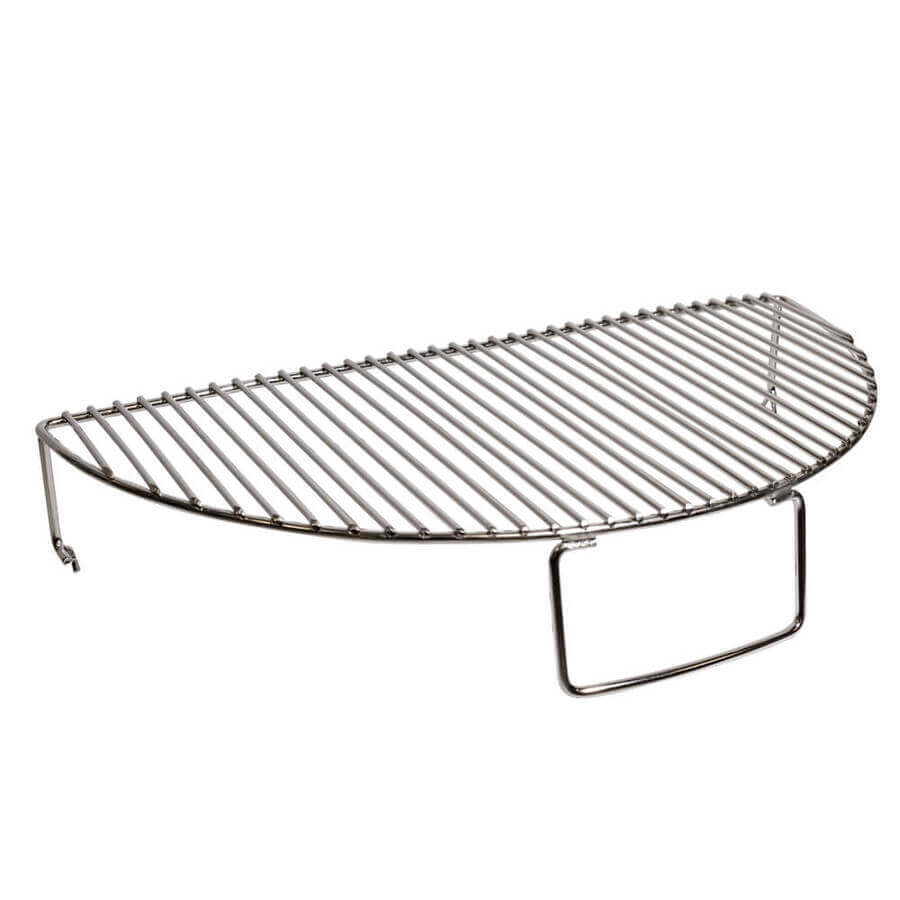Recipe for Roast Beef
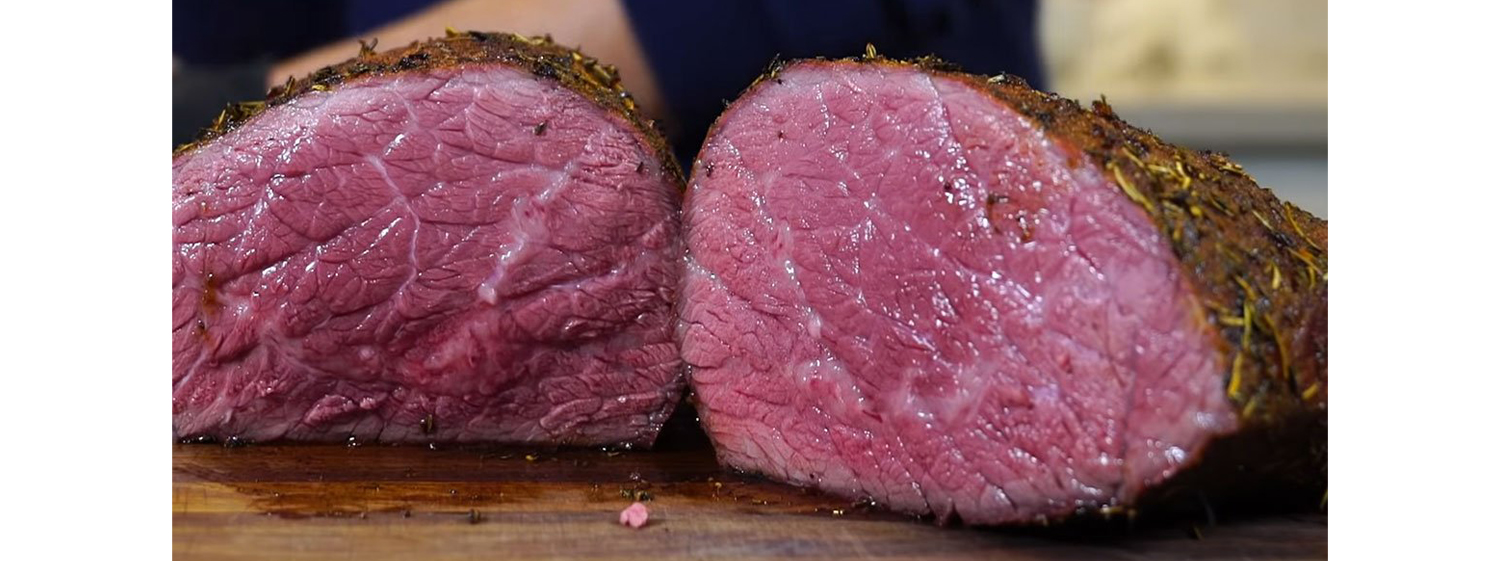
Introduction
Roast beef can be made from almost any roast. Dry brine and paper-thin slices are the keys to success with this cut. Dry brining (salting the outside of the meat) for two days allows the salt to penetrate deep into the meat and lock in the juices. Cutting each slice thin will help conceal the fact that this is a very lean cut that can be tough to eat in larger bites.
We finish the roast with a Cold Grate sear after a low and slow cook (allowing the meat plenty of time to absorb tasty smoke flavour). That final quick sear allows the herbs in the rub to bloom while also creating a nice outer crust without overcooking the interior.
Selection
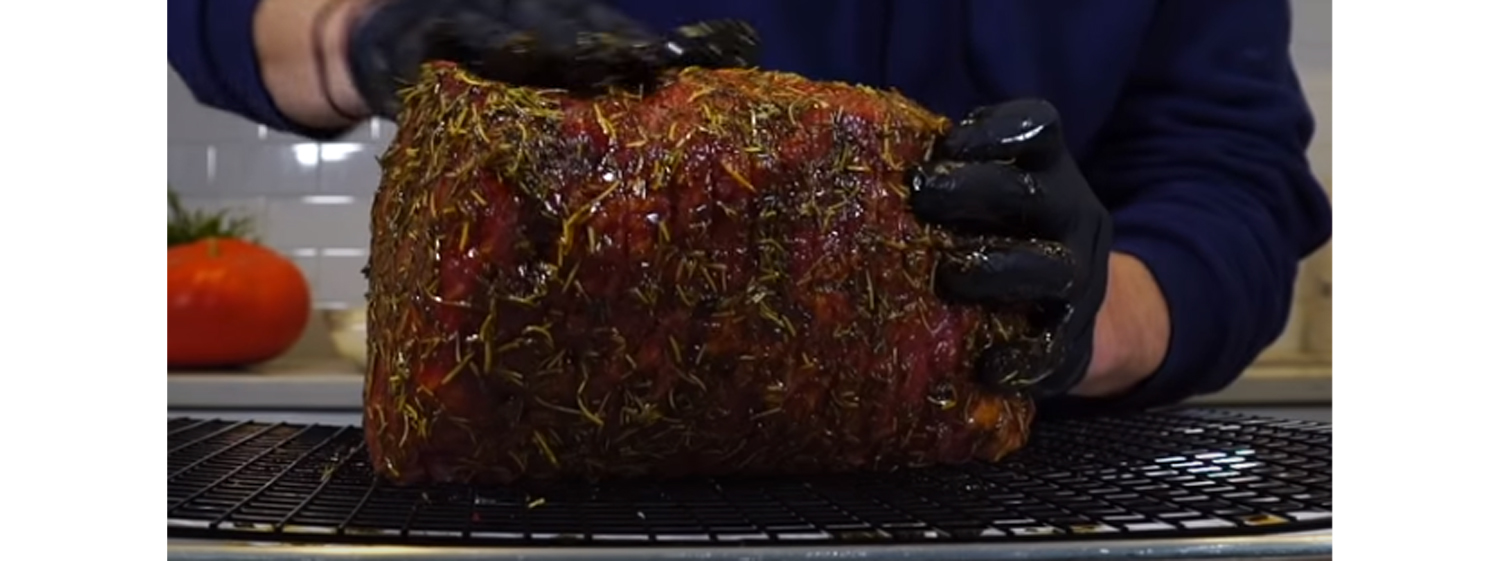
There are numerous roasts on the market, and they frequently go by a variety of names. We use a bottom round roast to turn a cheap cut into a tasty meal. The bottom round, or top round if you prefer, is frequently very lean, so marbling of the meat will not be a deciding factor when selecting your roast. The most important thing to look for is one that has an overall even thickness, as this will promote even cooking. Keep in mind that a plumper roast will require more time to cook than a long, thinner one.
Prep
Trim and Salt: Trim and salt the bottom round all over [1/2 tsp Kosher salt (or 1/4 tsp table salt) per pound] and refrigerate for 1-2 days. Because this piece of meat is so large, it may take two days for the salt to fully penetrate, but overnight is long enough to get the salt well into the meat. This will result in a juicy product with a big, beefy flavour.
To make the rub, combine all of the spices listed below in a bowl and then add about 2-3 tablespoons of olive oil, just enough to form a thick paste. You don't want it too loose.
- 2 Tbsp Dried Rosemary
- 2 Tbsp Dried Thyme
- 2 Tbsp Black Pepper, ground
- 1 tsp Garlic Powder
- 1 tsp Onion Powder
- 1 tsp Paprika
- 1 tsp Cayenne
Remove the dry brined meat from the refrigerator and pat it dry to remove any excess moisture from the surface. Then, generously apply the rub to the entire surface. Make sure it's completely covered. There's no need to season. During the dry brine step, we added all of the salt.
Cook
Because we're using a less expensive (and thus less tender) cut of meat, we'll cook the roast low and slow (225° F) to give the meat time to break down the connective tissues that make the meat tough. The slow cooking will also allow our meat to soak up some delicious smoke flavour. Then we'll finish it with a Cold Grate sear to allow the herbs to bloom and create a tasty outer crust.
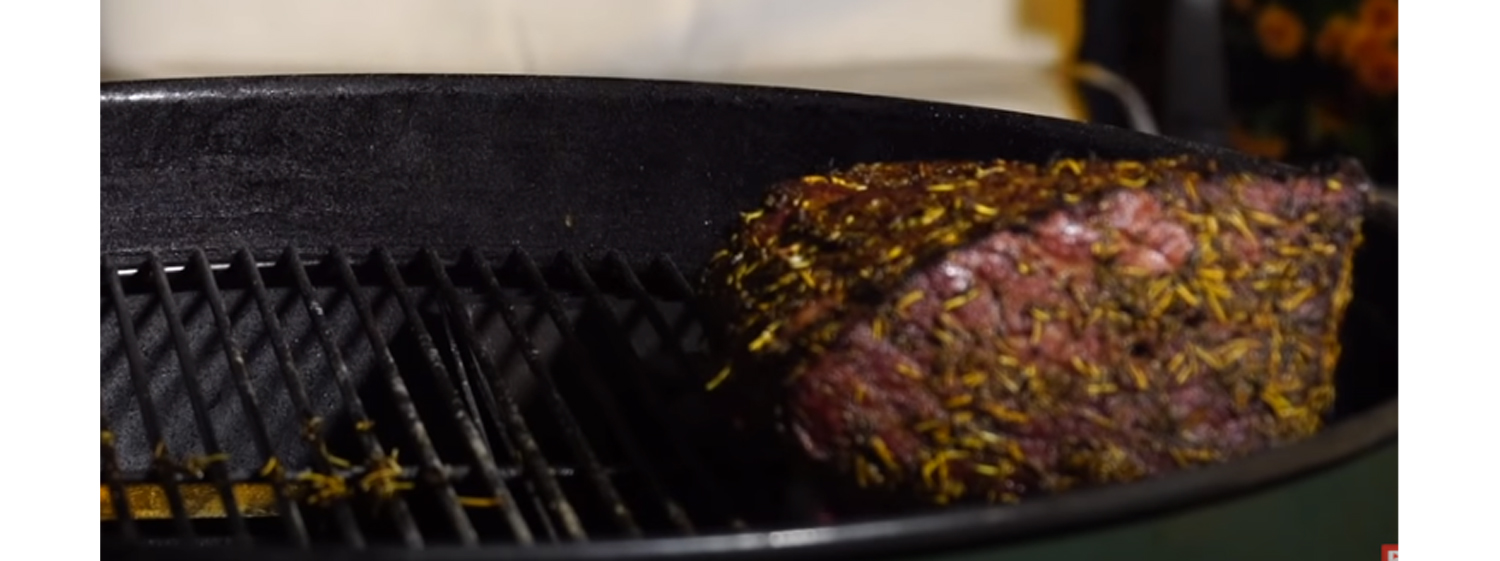
Take about 20-25 briquettes and fully light them. While the coals are getting hot, add 2 chunks of your favourite wood (we like pecan for this recipe). Adding the wood now will help the smoke turn thin white/blue faster, allowing us to begin cooking sooner and with less risk of acrid smoke flavour. Once the coals are fully lit, add them to the Slow ‘N Sear, which is already half-filled with unlit coals.
Add your Drip ‘N Griddle Pan and cooking grate to the kettle, and place a thermometer probe at grate level to monitor pit temperature. Put on the lid right away. On the indirect side, aim for 225°-250° F. It can get up to 275° F and still be safe, but try to keep it below that. Hotter temperatures will expedite the cooking process, but the meat will not be evenly medium-rare throughout.
Insert a leave-in thermometer probe into the thickest part of the meat and place the roast on the indirect side of the kettle once the temperature has stabilized and the smoke has cleared. Cook until the internal temperature reaches 80°-90° F on the indirect side, then flip top-to-bottom for even cooking. Cook until the internal temperature of the meat reaches 117°-120° F. Remove the meat and the cooking grate from the grill at this point. Depending on the thickness of the roast, the cooking time will vary. As a general rule, allow 3-4 hours.
Once the temperature of the meat reaches about 105° F, you can begin prepping the coals for the final sear. Fill a chimney 3/4 full with fresh charcoal and get those coals roaring hot on the side. They should be white-hot and ashed over when the meat reaches 117°-120°F. Remove the meat from the grill, add new, hot coals, and prepare to sear. Alternatively, once the meat has reached the desired temperature, remove it from the grill and leave the lid off the kettle to allow the remaining coals to breathe. With the lid off, the coals will heat up on their own, and additional charcoal may not be necessary.
Once the fire is blazing, return the cooking grate to the kettle and continue to sear the meat using the Cold Grate Technique until the internal temperature reaches 127°F. Then take it off the heat and let it rest until it reaches 130°F for medium-rare or 135°F for medium.
Slice
It is critical to slice the meat "correctly." Slicing as thinly and against the grain as possible will result in a tender, easy bite. Remember that we're making non-optimal cuts here, which can be difficult. Thin, cross-grain slices will fool you and your guests into thinking you used a much more expensive cut of meat.
Cut the meat in half, then cut one of the halves down the middle in the opposite direction. This will result in a flat side of meat that will lay evenly and make slicing easier. Make sure your knife is sharp, and take your time. Slice as thinly as possible. When you're finished slicing, don't be afraid to return any juices on your board to the meat – yum!
Serving Suggestion:
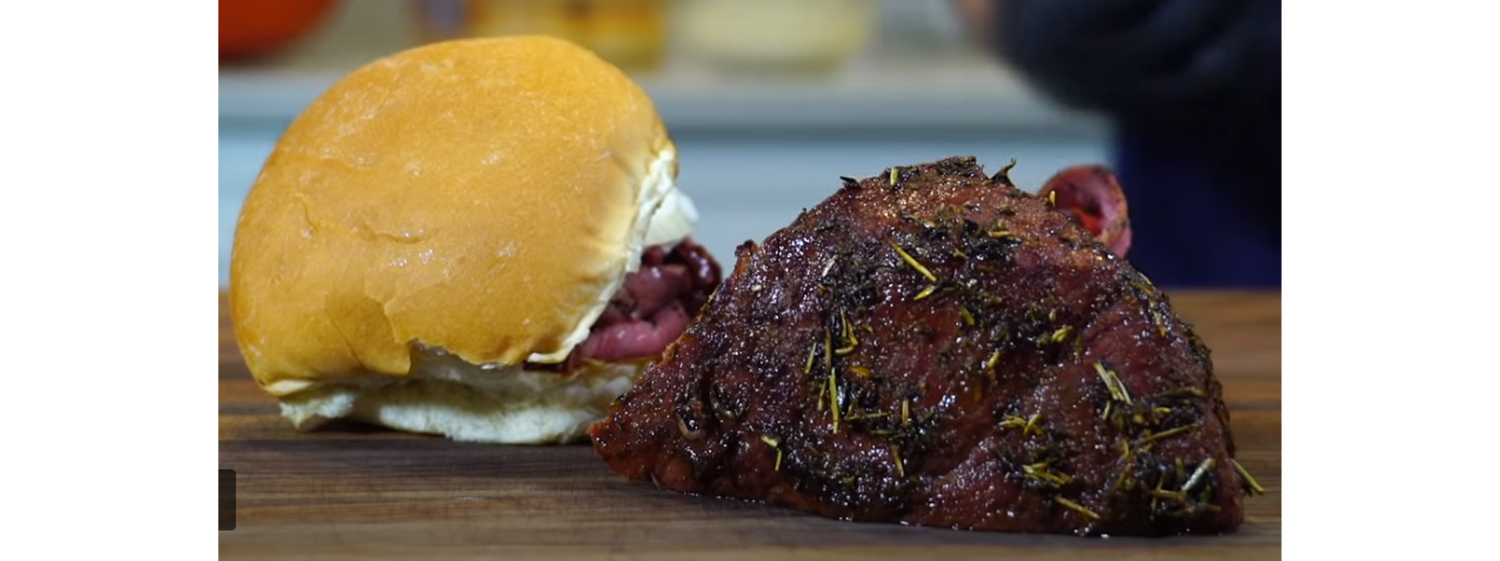
This meat makes a delicious sandwich, which is ideal for a quick lunch or feeding a crowd. To make a traditional-style Baltimore Pit Beef sandwich, pile the beef on a hearty roll (or rye bread), slather with horseradish sauce (recipe below), and top with a few thinly sliced onions.
Baltimore Tiger Sauce
- 3 tablespoons jarred, grated horseradish in vinegar
- 1/2 cup mayonnaise
- Mix the horseradish and mayo together and let sit at least 30 minutes.
Summary
- Prep: trim excess fat
- Dry brine overnight for best results
- Rub before cooking
- Low & Slow at 225 F until temp reaches ~117°F for med-rare
- Finish with a Cold Grate sear
- Slice thinly for optimal tenderness
Check Our Kettle Grills and Accessories: Click Here

